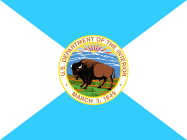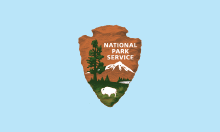United States Park Police
| United States Park Police | |
|---|---|
| Common name | U.S. Park Police |
| Abbreviation | USPP |
|
Patch of the United States Park Police | |
|
Flag of the U.S. Department of the Interior | |
|
Badge of the United States Park Police | |
|
Flag of the U.S. National Park Service | |
| Motto | Integrity, Honor, Service |
| Agency overview | |
| Formed | 1919 |
| Preceding agency | Park Watchmen (1791) |
| Legal personality | Governmental: Government agency |
| Jurisdictional structure | |
| Federal agency (Operations jurisdiction) | United States |
| Legal jurisdiction | National Park Service areas, primarily located in the Washington, D.C., San Francisco, and New York City areas and certain other government lands. |
| General nature | |
| Specialist jurisdiction | Environment, parks, and-or heritage property. |
| Operational structure | |
| Headquarters | Washington, D.C. |
| Agency executive | Robert MacLean, Chief |
| Parent agency | National Park Service |
| Website | |
| http://www.nps.gov/uspp/ | |
The United States Park Police (USPP) is one of the oldest uniformed federal law enforcement agencies in the United States. It functions as a full-service law enforcement agency with responsibilities and jurisdiction in those National Park Service areas primarily located in the Washington, D.C., San Francisco, and New York City areas and certain other government lands. The United States Park Police is one of the few full-service police departments in the federal government that possess both state and federal authority. In addition to performing the normal crime prevention, investigation, and apprehension functions of an urban police force, the Park Police are responsible for policing many of the famous monuments in the United States. The USPP shares law enforcement jurisdiction in all lands administered by the National Park Service with a force of National Park Service Rangers tasked with the same law enforcement powers and responsibilities. The agency also provides protection for the President, Secretary of the Interior, and visiting dignitaries. The Park Police is a unit of the National Park Service, which is a bureau of the Department of the Interior.
History


The Park Watchmen were first recruited in 1791 by George Washington to protect federal property only in the District of Columbia. The Watchmen were given the same powers and duties as the Metropolitan Police of Washington in 1882, and their name was officially changed to the present United States Park Police in 1919. Their authority first began to expand outside D.C. in 1929, and today they are primarily responsible for the Gateway National Recreation Area units within New York City and the Golden Gate National Recreation Area in San Francisco, as well as the many designated areas in the Washington area, which includes neighboring counties in Maryland and Virginia. These sites include the National Mall, the C&O Canal towpath in the region, and the parallel roadways of the George Washington Memorial Parkway in Virginia and Clara Barton Parkway in Maryland.
The police functioned as an independent agency of the federal government until 1849, when it was placed under the jurisdiction of the Department of the Interior. In 1867, Congress transferred the police to the Office of Public Buildings and Grounds, under the supervision of the Chief of Engineers of the Army Corps of Engineers. In 1925, Congress placed the Park Police in the independent Office of Public Buildings and Public Parks of the National Capital. Headed by an Army officer, Lt. Col. Ulysses S. Grant III, the office reported directly to the President of the United States. In 1933, President Franklin Delano Roosevelt transferred the police to the National Park Service.
Today they are a full-service agency with patrol, scooter, bicycle, plain clothes, detectives, motors, horse-mounted, crime scene identification technicians, narcotics and vice officers, SWAT, aviation, marine patrol, intelligence/homeland security, traffic safety unit and four state-of-the-art dispatch centers serving Washington, D.C., Maryland, Virginia, New Jersey, New York and California. Additionally, captains oversee NPS regional areas and officers may be deployed throughout the United States and US Territories at the request of the Department of the Interior or the National Park Service. One example would be the past deployment to the Dakotas to assist the Bureau of Indian Affairs.


Organization
Districts
Today, the U.S. Park Police has the responsibilities of providing policing in five districts in Washington, D.C. and surrounding areas, two districts in New York City, and one district in San Francisco.
District 1: Officers at Hains Point provide policing for the downtown D.C. area. Independence Avenue, Hains Point, Constitution Avenue, the Washington Monument, the National Mall, the Memorials, the Ellipse, Lafayette Park and other NPS areas up Florida Avenue are covered by this station, as well as the Rock Creek Parkway.
District 2: Officers provide coverage in three states at the GWMP Station. In Virginia, Fort Hunt, Mt. Vernon and the George Washington Memorial Parkway are primary responsibilities. In the District, Humpback Bridge and Lady Bird Johnson Parks. In Maryland, the Clara Barton Parkway is policed. Duties of these officers are similar to those of a state trooper providing round the clock coverage of major commuter roadways, performing crash investigations, and enforcement of traffic laws, DWI enforcement, and all other criminal investigations.
District 3: Officers of the Rock Creek Park station provide coverage to Georgetown, Rock Creek Park and the Fort Circle Park areas of NW and NE D.C.
District 4: Officers of the Baltimore-Washington Parkway station provide round the clock coverage of this major commuter parkway as well as adjacent roadways, parks, and Federal reservations in Prince George's County and Anne Arundel County.
District 5: (Anacostia Operations Facility) Officers of the Anacostia Station provide coverage to Anacostia Park, Fort Dupont, the Frederick Douglass Home and many other NPS properties in the SW and SE quadrants of Washington, D.C. This station also patrols the Suitland Parkway in Prince George's County, Maryland, as well as National Park Service sites in southern Prince George's County and parts of Charles County, Maryland such as Marshal Hall.
District 8: The San Francisco Field Office provides coverage for the Golden Gate National Recreation Area in San Francisco, Marin County, and San Mateo County, including park units such as Crissy Field, Marin Headlands, and the Presidio of San Francisco. The Presidio is exclusive federal jurisdiction.
District 9: This district is one of the two districts that make up the New York Field Office. District 9 provides patrol coverage for the Gateway National Recreation Area in Staten Island, Brooklyn and Queens.
Liberty District: This district also falls under the New York Field Office, and provides police services and security for Liberty Island and Ellis Island, Castle Clinton National Monument, and Federal Hall National Memorial. Liberty Island is exclusive federal jurisdiction.
In Virginia, USPP Officers are provided with Conservator of the Peace powers as set forth in 19.2-12 of the Code of Virginia[1] with powers and duties provided under 19.2-18 of the Code of Virginia.[2] In Washington, D.C. itself, USPP Officers have the same powers and duties as the D.C. Metropolitan Police. USPP Officers possess a limited arrest authority in the State of Maryland. The U.S. Park Police hold state arrest authority in New York [ New York State CPL 2.15 part 9 ], and state arrest authority in New Jersey [ New Jersey Code 2A:154-6 ]. In California, arrest powers are provided under California Penal Code Section 830.8. These state arrest powers are in addition to powers held as federal officers. The U.S. Park Police primarily enforce laws including but not limited to Title 36 of the Code of Federal Regulations (CFR) and other federal statutes such as 16 USC and 18 USC, as well as state and local laws.
The Guard Force
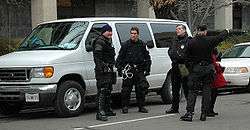
The USPP also oversees the Uniformed Guard Force which provides many urban National Park Service establishments with unarmed security guard and patrol services usually dealing with access and pass controls, key control, security patrols of buildings and facilities and assisting both the USPP and members of the public.
USPP SWAT team
The United States Park Police Special Weapons and Tactics Team has been in existence since 1975. This highly trained team is proficient with a variety of weapons including submachine guns, assault rifles, sniper rifles, and less-than-lethal weaponry. The SWAT unit conducts weekly high-risk search warrants and provides vehicular escorts and motorcade support for the President of the United States, the Vice President, and visiting heads of state in the District as well as at Camp David. The Park Police SWAT team often provides tactical support to the many demonstrations in Washington, D.C. Also, in conjunction with the Uniformed Services University of the Health Sciences, Casualty Care Research Center, SWAT has trained thousands of personnel from police departments, military units, and fire departments from the United States and abroad in tactical emergency medicine as part of the CONTOMS program.
SWAT conducts basic SWAT schools annually, which are routinely attended by members from outside departments and the United States Armed Forces. The physically and mentally grueling basic training allows officers to see what they are capable of under extreme fatigue and stress. You can also see the SWAT team in their armored vehicle at demonstrations on The Mall such as the Rally to Restore Sanity and/or Fear, the Restoring Honor rally, United States presidential inaugurations, the National Christmas Tree Lighting, and other major national events in the DC area.
When the Washington Metropolitan area was under siege during the 2002 Beltway sniper attacks, the SWAT Unit was flying daily missions with the Aviation Unit in an attempt to apprehend the fugitives. During the Norman Mayer incident in the early 1980s the USPP SWAT team counter-sniper unit took action from the top of the Herbert C. Hoover Building into a moving vehicle at the Washington Monument.
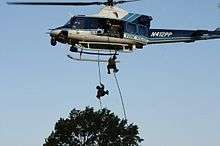
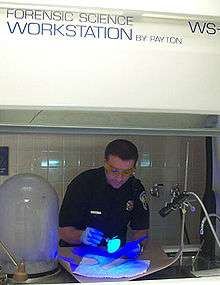
USPP Motor Unit
The United States Park Police purchased its first Harley-Davidson motorcycles in 1917. These Harley-Davidson motorcycles were assigned to the first sergeant and one private. The second sergeant and 41 privates were mounted on bicycles, one man left to be a "footman." During the fiscal year ending June 1917, the force handled 717 offenses. The most common charge was for drunkenness, for which the most common sentence was time at the workhouse. There were few serious offenses, the worst being six cases of assault and one of robbery. Twenty-five members of the force were called upon to arrest about 50 women for climbing on the Lafayette statues in Lafayette Park and holding a women's suffrage movement meeting there.
In 1919, the force acquired a major new responsibility with the acquisition of Rock Creek Park and its parkway. By 1920, with the addition of four additional motorcycles, traffic related offenses rose to 439.
As of 1921 the force had a lieutenant, three sergeants, and 53 privates. Two of the sergeants and seven privates rode motorcycles, the lieutenant, the third sergeant, and 45 privates rode bicycles, and the remaining privates were horse mounted. By 1925 the Motor Unit had grown to a force of twenty motorcycles for use on the "highways" of Rock Creek Parkway as well as East and West Potomac Parks.
With the increase in motor vehicles for the public came an increase in the use of motorcycles for the force. With this advance in "new transportation" came an increase in motor vehicle violations. This was evident from the 1942 memo which read "Special attention 'Motorcycle Men.' in the event an officer of this department has reason to stop a motorist for a traffic violation and fails to issue a ticket or arrest the person for such violation, he shall submit a written or telephonic report to this office before he goes off-duty. Signed Captain M.H. Raspberry." From 1931 to 1939, the force recorded 60 reported injuries to members of the Motor Unit, along with one death. During the early years of World War II, Motor Officers were directed to conduct "black-out drills" and assist with movement of civilians from their offices. Many changes occurred within the Motor Unit at that time as needs of the nation's capital changed with the progress of the war effort. There were added responsibilities of coordinating scrap metal drives, gasoline rationing, etc. Memorandums from this time dictate that all "motor men" act in a professional and courteous manner.
During the course of the 1950s and 1960s, the unit had grown to approximately 60 motorcycle officers. The most common formal training received at that time to be "mounted" was a few laps around the maintenance yard.
Today, new officers are trained by IPTM-certified force motorcycle instructors. Training consists of an 80-hour course with road and off-road courses. There are required courses in high-speed pursuit, short-obstacle maneuvers, and an officer safety and survival course. In 1996, at the personal request of King Hussein of Jordan, three members of the training staff traveled to Jordan to train the royal family and Royal Guard.
Officers assigned to the Motor Unit are required to ride year-round. Officers are required to ride with a sidecar from November to March each year. This requires completion of an additional 40-hour course for each new member of the unit. This is mandated by the units' function as a Principal element in escort duties for the President, Vice President, and foreign dignitaries while in the nation's capital. The unit works closely with the Secret Service and the Department of State on these escorts. This Motor Unit has been escorting the President of the United States since its inception in 1921.
Additionally, the unit is responsible for performing various traffic and patrol duties, as well as duties during numerous special events and demonstrations. Such events have included the 1963 March on Washington for Jobs and Freedom, the civil rights and anti-war demonstrations of the 1960s and 1970s, United States Bicentennial celebration in 1976, the 1995 Million Man March, the demonstrations against the World Bank and International Monetary Fund in 2000, the annual National Cherry Blossom Festival, the annual Rolling Thunder Run, and the annual National Christmas Tree lighting in early December.
In 1995, due to injuries and retirements, the 16 remaining privates of the Motor Unit accounted for over 5,000 moving citations. During the September 11 attacks, members of the Motor Unit were among the first responders to the Pentagon, escorting government officials out of the city, and securing approximately one-third of the District of Columbia after the attacks. Members of the Motor Unit have also been detailed to travel to events such as the 1996 Summer Olympics in Atlanta, GA, Death Valley, CA for Outlaw motorcycle club rides, Boston and Philadelphia for United States presidential nominating conventions, and other areas of large demonstrations. Officers of Motorcycle Unit account for one-third of the line of duty deaths in the 216-year history of the force.
Currently, the force has 30 assigned motorcycles in the Washington, D.C. metropolitan area and four assigned motorcycles in the San Francisco office. This creates a motorcycle unit that is assigned to both the East and West coasts of the United States, and that truly encompasses the name "United States Park Police Motor Unit.
Canine Unit
The United States Park Police Canine Unit was established in 1959, the first in the Washington, D.C., area. Two years earlier, Chief Stewart sent Sgt. Alfred Beye to the Royal Canadian Mounted Police Training Kennel in Nova Scotia, Canada. Sgt. Beye then trained with the Baltimore City Police Canine Unit and returned to train the first canines.
The first handlers were members of the Horse Mounted Unit. They trained each dog in different language commands, so that others could not control them. These included Spanish-Indian, German and Japanese. Once they trained the dogs, they would trot along next to the horse-mounted handler while he patrolled the horse trails. Eventually, the force only assigned the canine handler the duties of working with a trained dog. By the early 70's, only one canine team remained.
The Canine Unit is specifically trained for drug and explosives detection. This special unit also provides search and rescue services and assists in securing areas prior to the arrival of the President, Vice President, and visiting heads of state. In 1974 the force added the first explosives detector dogs. Also in the mid 1970s, the Force trained the first narcotics detector dog teams. Over the years the canine unit has moved between the Patrol Branch and the Special Forces Branch, to which it is currently assigned. The force currently has a number of canines which are assigned in Washington, D.C. as patrol dogs. Several of these dogs are also cross-trained in narcotics detection. The force also has officers and canines assigned as explosives detector teams in Washington, D.C. The force has a number of dog teams assigned in the New York Field Office and the San Francisco Field Office.
Horse Mounted Patrol

The horse-mounted unit was established in 1934, and is one of America's oldest police equestrian organizations in the United States.
Horse-mounted patrols are assigned to federal parks in Washington, D.C., New York City, and San Francisco. These nationally acclaimed officers and mounts are highly respected for crowd management techniques. They also function to maintain order during major demonstrations and special events and have been transported to other sites in the National Park system to control demonstrations.
The first use of horses by the United States Park Police followed the general trial-and-error method that prevailed throughout much of police work in those days. Rock Creek Park, a 1,900 acres (770 ha) tract of heavily wooded terrain lying in the heart of Washington, D.C. is interspersed with equestrian trails that required special policing methods for which the horse is ideally suited. Large park areas with open spaces, picnic areas, ball fields and other activities were soon found to be places where horses could patrol more effectively than foot officers or motorized vehicles. Because of this, stables were erected and new horse-mounted boundaries were established.
The nation's capital hosts many civic functions each year. Some of them are annual events and some have a national and international character, such as the National Cherry Blossom Festival, the Christmas Pageant of Peace, and presidential inaugurations. During the 1960s and the 1970s, the horses, in addition to being an attractive unit for display in parades, were found to be highly effective in crowd and traffic management at these functions. The horses were properly trained and conditioned to maneuver in crowds of people and through heavily traveled roadways so they would not endanger the public, themselves, or other riders.
The U.S. Park Police Horse Mounted Training Staff receives numerous requests from outside agencies to provide them with training. This agency has assisted the U.S. Army, U.S. Secret Service, and police departments from Maryland, New York, West Virginia, South Carolina, Kentucky, Colorado, New Mexico and many others. Instructors are regularly requested to provide training at police seminars as mounted colloquiums held throughout the United States. The United States Park Police Horse Mounted Unit offers the 400-hour remount training free of charge to outside law enforcement agencies.
Communications
U.S. Park Police maintains communications centers which operate 24 hours a day seven days a week. One in the District of Columbia, one in San Francisco and two in the New York area. The Park Police oversees two dispatch (SF and NY) centers which also dispatch park EMS crews as well as park police officers. The centers are staffed by fully trained emergency dispatchers who handle a wide range of emergency calls for service, from shooting calls to suicide calls. The dispatchers have been credited with saving numerous civilian lives through specialized call taking (such as suicide call taking) and through quick deployment of officers to scenes as well as coordinating multi-agency police responses to scenes.
Aviation
The Aviation Unit of the United States Park Police began in April 1973 and was placed under the command of Lt. Richard T. Chittick. It started with one Bell 206B JetRanger and a staff of three pilots and three rescue technicians based at the Anacostia Naval Air Station in a shared space with the MPD Aviation Branch. A second helicopter, a Bell 206B-3 JetRanger, was added in 1975 and the unit relocated to Andrews AFB.
The Aviation Unit moved to its present facility in Anacostia Park, the "Eagle's Nest," in 1976. In 1983, the 206B-3 was upgraded to a Bell206L-3 LongRanger. Their first twin-engine helicopter, a Bell 412SP, and the third helicopter to carry the designation "Eagle One," was placed in service in January 1991. The unit grew to its current staff, and began providing 24-hour coverage in January 1994.
In August 1999, the unit took delivery of its second twin-engine helicopter, a Bell 412EP. It became the fourth helicopter in the unit's history to carry the designation "Eagle One" and the same registration number as that of an earlier aircraft whose crew affected the rescue of victims after the crash of Air Florida Flight 90.
The missions of the United States Park Police Aviation Unit include aviation support for law enforcement, medevac, search and rescue, high-risk prisoner transport and presidential and dignitary security. The Aviation Unit has provided accident-free, professional aviation services for over 28 years. This is due to the dedication of the flight crews, the support from within and outside the Force, and the state-of-art equipment used in the performance of its missions.
Marine Unit
The United States Park Police Marine Unit operates primarily out of both District 9 and Liberty District in the New York Field Office, providing coverage of National Park Service areas in New York Harbor and Jamaica Bay. Responsibilities of the Marine Unit include enforcing boating regulations, fish and wildlife protection, security zone enforcement, and search and rescue. The Washington, D.C. U.S. Park Police Marine Unit has been disbanded.
Traffic Safety Unit
The Traffic Safety Unit operates primarily out of the Washington, D.C. area, coordinating the department's alcohol, Drug Recognition Expert (DRE), Advanced Roadside Impaired Detection Enforcement (ARIDE), speed enforcement programs and DOT Commercial Motor Vehicle Inspections. This unit is also responsible for conducting investigations of major traffic accidents, that involve death or serious injury, in National Park Service areas. The Traffic Safety Unit trains park police officers, as well as officers from other agencies, on equipment such as; Radar, Laser, Intoxilyzers, tint meters, and PBTs (Preliminary breath test). This unit also provides training on accident investigations, forensic scene mapping, total station, and Standardized Field Sobriety Testing (SFST). The Traffic Safety Unit also coordinates the department's involvement with the Smooth Operator Program in the Washington, D.C. area, which targets aggressive drivers.
Criminal Investigations Branch
The Criminal Investigations Branch has personnel assigned to all U.S. Park Police areas nationwide. Assigned personnel consist of detectives, plainclothes investigators, identification technicians, and civilians. Elements of the Criminal Investigations Branch are;
Major Crimes
Identification Section
Narcotics and Vice
Environmental Crimes
Other functions include dignitary protection, assisting with demonstrations and civil disturbances, and participating in federal and local task forces.
Special Forces Branch
The Special Forces Branch is responsible for coordinating the many large, high-profile events that occur in National Park Service areas in the Washington Metropolitan Area (WMA). These events include Demonstrations, festivals, and the United States presidential inauguration, all of which can have millions of attendees. This branch of the U.S. Park Police, along with the National Park Service, creates incident action plans focusing on concerns such as public safety, emergency management, and transportation entities. The Special Forces Branch determines the size and scope of deployment of the department's personnel before and during an event. This personnel may include specialized units such as SWAT, Aviation, reactionary teams, and Horse Mounted Patrol. The Special Forces Branch, along with the National Park Service and other law enforcement agencies, work to ensure the safety of all that are involved. This unit is also responsible for Presidential security and dignitary escorts. This unit may also assign personnel as needed by the National Park Service or the Department of the Interior throughout the United States and its territories.
Rank structure
| Title | Insignia |
|---|---|
| N/A |
Admission to the U.S. Park Police
Park Police Officers must be U.S. citizens over the age of 21, but under 37 when they first apply. They must have at least 60 college credits or two years of military service at the time of appointment or combination of both. Upon completion of academy training(16 weeks of LMPT prior to 2008, 12 weeks of UPTP after 2009), officers are initially assigned to the Washington, D.C. area, where the largest contingent of Park Police is located. They are trained at the Federal Law Enforcement Training Center (FLETC) in Brunswick, Georgia. After training is completed at FLETC, new officers must successfully complete field training.
Dispatchers must be U.S. citizens at least 18 years of age or older, have college credits or prior dispatching or law enforcement/military/public safety experience. Dispatchers must pass pre-placement testing and a vigorous background check. Training is conducted within the district which they are assigned to.
The Air Florida Flight 90 incident
The previous Superintendent of the NPS Training Center at FLETC, Donald W. Usher, was a USPP officer and helicopter pilot who, on January 13, 1982, assisted following the crash of Air Florida Flight 90 in the Potomac River in Washington, D.C. Usher and paramedic officer Melvin E. Windsor, were assigned to the Park Police's Aviation Unit and were flying Eagle 1, a Bell 206L-1 Long Ranger helicopter from the "Eagle's Nest" base at Anacostia Park. They saved four lives that day at great risk to their own safety. Officers Usher and Windsor were only two of the many Park Police officers who have received the U.S. Department of the Interior's Valor Award.
Gallery
 One of the "tragedies" of the Easter egg rolling at the White House. At one time Sgt. McQuade of the White House Police had eight youngsters who had strayed from their parents. All were safely returned April 17, 1922
One of the "tragedies" of the Easter egg rolling at the White House. At one time Sgt. McQuade of the White House Police had eight youngsters who had strayed from their parents. All were safely returned April 17, 1922 A Chevrolet Impala police car used by the U.S. Park Police.
A Chevrolet Impala police car used by the U.S. Park Police. An off-road vehicle that is used by the U.S. Park Police.
An off-road vehicle that is used by the U.S. Park Police.- An officer from the U.S. Park Police Horse Mounted Unit
- U.S. Park Police helicopter patrolling the National Mall
In popular culture
- Forrest Gump (1994 film)
- The West Wing (television)
- The District (television)
- The Sentinel (2006 film)
- In the Line of Fire (1993 film)
- My Fellow Americans (1996 film)
- Wedding Crashers (2005 film)
- NCIS (television)
See also
- List of United States federal law enforcement agencies
- List of law enforcement agencies in the District of Columbia
- Park Police
References
External links
| Wikimedia Commons has media related to United States Park Police. |
- U.S. Park Police Official Site
- The United States Park Police - A History by Barry Mackintosh
- Retired U.S. Park Police Official Site
- USPP Officers who have received Citations for Valor provided by the Retired U.S. Park Police Association
- The Fraternal Order of Police's Labor Committee representing the Officers of the USPP

